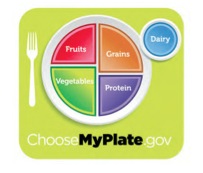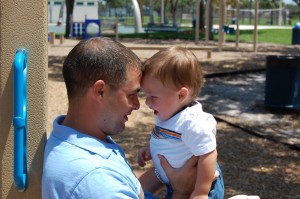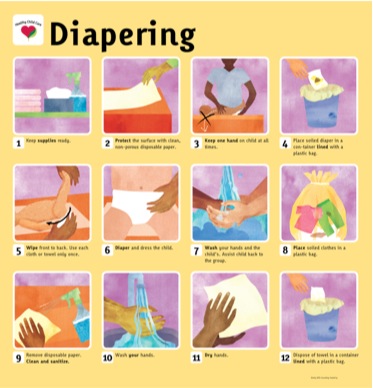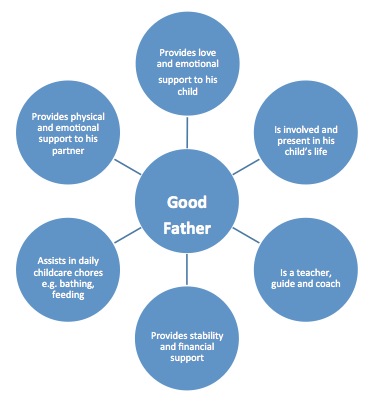Click the links to the left for more information.
Immunizations
Babies are born with protection against certain diseases because of antibodies passed to them via the placenta. Although they may be immune to some diseases, this is only temporary and most young children do not have maternal antibodies for diphtheria, whooping cough, polio, tetanus, hepatitis B (HepB), or Hib (Haemophilus influenzae type B).
It is important to give your children vaccines at a young age because that is when they are most vulnerable to certain diseases. As a parent, you may hesitate to have your kids vaccinated because you are worried that your children will have serious reactions or may get the illness the vaccine is supposed to prevent.
However, an infant’s immune system is more than ready to respond to the very small number of weakened and killed infectious agents (antigens) in vaccines. From the time they are born, babies are exposed to thousands of germs and other antigens in the environment and their immune systems are readily able to respond to these large numbers of antigenic stimuli. Some vaccines may cause mild reactions, such as soreness where the shot was given or temporary fever, but serious reactions are rare.
Without immunizations, your child’s body may not be strong enough to fight the diseases that could have been otherwise prevented with vaccinations. This could result in serious complications such as pneumonia, meningitis (swelling of the lining of the brain), bloodstream infections, liver cancer (if they contract Hepatitis B), and even death.
Immunizations or vaccines are given early in an infant’s life. Their purpose is to help the body’s natural immune system fight off diseases. Some immunizations can give protection after a single dose, but most require booster immunizations to remain protected.
Speak to your child’s healthcare provider to determine the best vaccinations and schedule for your child. Vaccines may be given free to eligible children. Local health departments can also provide vaccinations for children at a very low cost, and they will not deny childhood vaccinations for those who cannot pay.
The CDC recommends vaccinations to protect children against
14 infectious diseases.
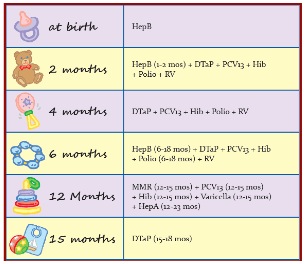
For More Information on Immunizations Visit:
NIH Medline Plus
Take a look at this vaccination chart and learn how immunizations may protect your child against childhood illnesses.
http://www.nlm.nih.gov/medlineplus/magazine/issues/spring08/articles/spring08pg7.html
Kids Health
Centers for Disease Control and Prevention
Illness
All children get sick at one point or another. Learning the signs of common illnesses is a good place to start – and knowing what to do and when to do it can give you peace of mind. Prevention is always better than cure and if your child has a nutritious diet and plenty of exercise, they stand a much better chance of fighting off germs and staying healthy in the first place.
Some of the common kid’s health problems are:
Fevers
Babies typically get fevers when they are fighting off an infection, especially during the first 3 months of life as their immune system is not that strong yet. When your child is sick, their body temperature will rise to fight off the unwanted infection. It is important to know that children’s body temperatures can naturally fluctuate during the day by a degree or two, and most kids will hit a high temperature of around 100.2 in the early evenings. The best way to check your child’s temperature is taking a rectal temperature. This is done by placing a digital thermometer in the baby’s anus. This method is accurate and gives a quick reading of the baby’s internal temperature. Do not use an oral thermometer to take a rectal reading as this can cause injury. Oral and rectal mercury thermometers have different shapes and one should not be substituted for the other. Rectal thermometers have a security bulb designed specifically for safely taking rectal temperatures.
Here is when you should be concerned about your babies fever:
- For infants under 3 months old, anything 100.4 degrees (F) or above you should call the healthcare provider.
- For infants between 3 and 6 months of age, call the healthcare provider when temperatures are 101 (F) degrees or above.
- For children 6 months and above, call when temperatures reach 103 degrees (F).
Diarrhea
- Usually caused by bacteria or a stomach bug and flu.
- Keep in mind that when a baby is in the first few weeks of life, they often will have very loose and watery bowel movements that are not diarrhea.
- If your baby is suffering from diarrhea, they are likely to be fussy and to show other signs of not feeling well.
- Watch out for signs of dehydration such as having a decrease in wet diapers, a dry mouth or dry crying.
- They may seem too lethargic and out of it.
- If you have concerns over their symptoms, contact their pediatrician.
Cold
- In a period of 45-60 days, a child will frequently contract a cold.
- This can be due to a weakened immune system or allergies from pollen and dust.
- Symptoms will last for 5-7 days.
- Body ache, cough and runny nose are some the common symptoms of cold.
- Nose drops and other medications can help to relieve these symptoms.
Flu
- This is one of the most common childhood conditions and is caused by influenza virus.
- Loss of appetite is one of the common symptoms of flu.
- Measuring the body temperature is important. A temperature of more than 100 degrees maybe an indication that something is wrong.
- It may be helpful to get your child a flu shot upon your healthcare provider’s recommendation.
Jaundice
- Signs of jaundice usually appear between the 2nd and 3rd day after birth.
- Signs include yellow skin and yellow eyes.
- Your baby will usually be checked for jaundice prior to being discharged from the hospital.
- If your baby is discharged earlier than 72 hours following birth, you should have a follow-up appointment to check for jaundice within two days of discharge.
Scarlet fever
- This is a health condition characterized by red rashes on a child as a result of a bacterial infection.
- The rash begins from the torso and spreads to the abdomen and other body parts.
- There may be a rise in the child’s body temperature and they may have problems swallowing.
- Bright red taste buds with white spots can be seen on your child’s tongue, which is known as ‘Strawberry tongue’.
- The treatment of scarlet fever is by antibiotics as prescribed by your child’s healthcare provider.
Fifth disease
- This condition is a type of rash. Although its not generally a serious condition, it is important to take your child to the healthcare provider.
- Your child may have red rashes over the body and cheeks.
- Give your child lots of fluids when you see this condition.
- When your child has this condition, make sure to bathe them properly and make sure they are clean.
Some other common childhood illnesses
- Constipation
- Stomach ulcers
- Lactose intolerance
- Scabies
- Dandruff
- Heartburn
- Nail fungus
- Chicken pox
The following symptoms should always be treated as serious – and – you should call your healthcare provider right away if your baby is showing any of them:
- A high-pitched, weak or continuous cry
- A lack of responsiveness, reduction in activity or increased floppiness
- In newborns, a bulging fontanelle (the soft spot on a baby’s head)
- Neck stiffness (in a child)
- Not drinking for more than eight hours (taking solid food is not as important)
- A high temperature (see fever section) but cold feet and hands
- A high temperature coupled with quietness and listlessness
- Fits, convulsions or seizures
- Turning blue, very pale, mottled or ashen
- Difficulty breathing, fast breathing, grunting while breathing, or if your child is working hard to breathe, for example, sucking their stomach in under their ribs
- Your baby or child is unusually drowsy, hard to wake up or doesn’t seem to know you
- Your child is unable to stay awake even when you wake them
- A spotty, purple-red rash anywhere on the body (this could be a sign of meningitis)
- Repeated vomiting or bile-stained (green) vomiting
For More Information on Child Illnesses Visit
Kid Health
WebMd
Injuries/Safety
Twenty children die every day from preventable injuries. Injuries are the leading cause of death in young children and the death rate for young males is almost twice as high as that for females in all age groups.
- For children under 1 year, 66% of injury deaths are due to suffocation.
- Drowning is the leading cause of injury death for those 1 to 4 years of age.
- For children 5 to 19 years of age, motor vehicle accidents are the leading cause of injury deaths.
Once kids start moving, they become very active and start to explore and even pop anything into their mouth. Pretty much, more independence and less adult supervision can put children at risk for injuries from falls, poisonings, and other accidents.
Falls
The majority of fall-related injuries in children under age 5 happen at home.
Most infants fall from furniture, stairs or baby walkers. The best way to prevent injuries is to:
- Make sure your furniture is well padded, especially on the corners.
- Always use safety gates to block staircases.
- Make sure your baby’s crib is well secured and put the baby to sleep on their back.
Toddlers may also fall out of windows or off balconies:
- Make sure that all furniture is moved away from windows so they cannot climb on them.
- Install window guards and secure balconies with child resistant latches.
Older kids fall from playground equipment, bikes, scooters, roller blades, or skateboards. To minimize injuries:
- Avoid play areas with hard surfaces.
- Always insist that your children wear helmets when riding bikes, roller blades, scooters and skateboards. Helmets provide protective head padding should your child fall.
- Never allow your kids to jump on furniture or run on slippery surfaces. Find more appropriate and safe activities.
Drowning
Drowning is the leading cause of unintentional injuries in kids aged 1 to 4. Although the majority of drowning accidents happen in swimming pools, kids can drown in bathtubs, buckets, coolers, ponds, lakes, ditches, fountains, toilets, pet bowls, or wading pools. All it takes is for you to leave your kid unsupervised for a few minutes near as little as two inches of water for a drowning to occur.
Remember the following:
- Always empty water buckets and tubs after use.
- Leave the toilet cover down and consider installing safety clips to prevent your toddlers from opening them.
- Always make sure that your swimming pool area is well secured with fencing and gates.
- Always place safety covers on pools and hot tubs to prevent your kids from falling inside when not in use.
- Teach your child to swim from a young age. You can contact surrounding community centers for free swimming lessons.
- ALWAYS supervise your kids when they are near water or swimming.
- Use flotation devices if they do not know how to swim or don’t know how to swim well.
Poisoning
Children can be harmed by swallowing poisons or absorbing them through the skin. This can include cleaning products (e.g. Clorox, Ajax), cosmetics, alcohol, pesticides, pills and medicines, houseplants, carbon monoxide from unvented heaters or lead. To prevent injuries or death from poisoning:
- Keep all poisons including household cleaners and cosmetics out of your children’s reach, store them in high cabinets or install safety locks
- Separate all foods and household products
- Do not mix cleaning solutions together
- Always give them correct dosages of medicines, read the labels and double check to make sure you are giving them the right medicine
- Never take medicine in front of kids or refer to it as candy or they might get curious and attempt to imitate you
If you think your child has been poisoned call 911 immediately!
Burns
Burns are a common cause of preventable injury, leading to the hospitalization of almost 40,000 children and over 1,000 deaths each year. Half of these injuries are in children under the age of 4 years.
Scalding liquids cause most burns in children under 5. Burns can occur as a toddler knocks over a coffee cup or grabs the handle and spills a pot of boiling water on the stove. Here are some things you should know about preventing burns.
- Keep matches and lighters out of children’s reach.
- Avoid using portable heaters in rooms where children play or sleep.
- Never leave children alone in a room with candles, space heaters or a burning fireplace.
- Keep hot items in the center of the table and avoid using a tablecloth because children can pull on the cloth causing hot foods or drinks to fall onto the child.
- While cooking, keep children at least three feet away from the stove, use back burners whenever possible and turn pot handles toward the back of the stove.
- Don’t allow children to play around outdoor grills or open fires.
- Install a fire extinguisher in the kitchen.
- Smoke detectors are the greatest advance in fire safety and burn prevention. Install smoke detectors on every level of your home and outside all sleeping areas. Test smoke detectors every month and replace the batteries every six months.
- Practice a fire escape plan with your children and make sure children have a safe way to reach the ground from upper floors, such as a non-combustible escape ladder.
- Lower the water heater thermostat to 120° F or below.
- Use a cool-mist humidifier in place of a hot water vaporizer to avoid steam burns and scalds often caused by hot water vaporizers.
- Never leave a child alone in the kitchen when food is cooking.
- Never carry a child and hot liquids at the same time.
- Never warm a baby bottle in the microwave. Microwaves heat unevenly and a child may be burned by hot spots.
- Stir and test the temperature of foods before giving them to children.
If your child is burned or scalded, call your child’s healthcare provider immediately.
Treatment of burns depends on how severe they are. Burns may be:
First degree: limited to the outer layer of the skin, causing it to be dry, red and painful, but without blistering. A mild or moderate sunburn is an example of a first-degree burn.
Second degree: this burn is more serious, and involves blistering of the skin. This type of burn is also painful, but unlike a first-degree burn, the affected skin will likely appear to be moist.
Third degree: all of the skin layers have been penetrated and the burned area will be white, charred, firm and leathery. A third degree burn also destroys nerve endings, so your child may not feel pain in the burned area.
Fourth degree: extend down to muscle and/or bone, but fortunately, these are rare.
Also, remember that kids are curious.
While that is a good thing, they will try to explore and get into anything and everything. Keeping your baby safe at home gets more challenging as your little one starts moving. As a parent it is your job to make sure that they have a safe environment to do their exploring. You can do this by baby proofing your house. Make sure you install:
- Cabinet child safety latches and locks for every room in your house.
- Refrigerator locks, oven latches and stove knob covers for your kitchen.
- Child safety locks for bathroom drawers and medicine cabinets, door locks, toilet locks.
- Appliance locks and latches for TVs, DVD players and stereos and file cabinets.
- For electrical safety, you can buy sliding safety plates and covers for standard plugs and outlets. This is important because younger children will try to put things in electrical outlets and this could result in electrocution.
For More Information Visit
NIH Medline Plus
http://www.nlm.nih.gov/medlineplus/childsafety.html
Centers for Disease Control and Prevention
http://www.cdc.gov/safechild
